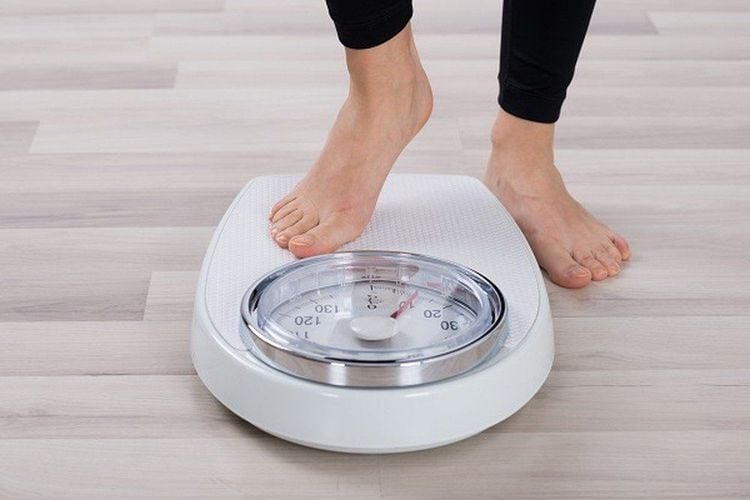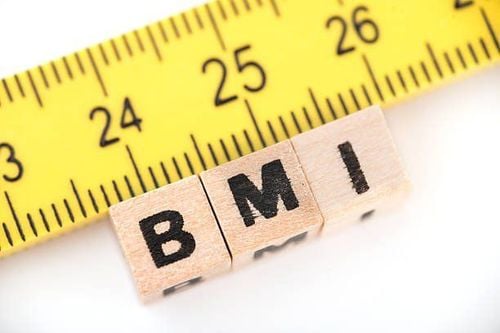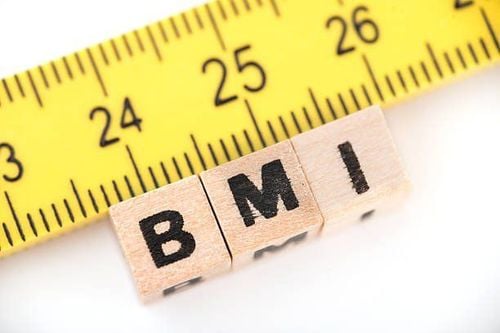This is an automatically translated article.
Health professionals around the world agree that adult men who are overweight and have related health problems benefit from weight loss. Even small weight loss can improve overall health by lowering blood pressure and/or cholesterol levels. Men's weight is usually only assessed through absolute values. However, men's weight-for-height will provide more information.
1. Men's weight and health
Weight is closely related to human health. If underweight, men may need to gain weight. And this should always be taken as part of a balanced and nutritious diet. If your weight is in the acceptable range then you should maintain the correct amount of food to keep your weight within a healthy range.
Overweight? If you're overweight for your height, try to cut back on how much you're eating, especially foods and drinks that are high in fat or sugar. More physical activity, exercise, strength training is also a good solution to lose weight and maintain fitness. Many studies have demonstrated that being overweight can increase the risk of cardiovascular diseases, type II diabetes, high blood pressure, and bone and joint diseases. With the help of the internet and computers, weight loss planning can be set up quickly and personalized, tailored to each person's weight loss goals.

Cân nặng có mối liên quan mật thiết đến sức khỏe của con người
2. How is the standard male weight determined?
Determining the average weight value is quite simple, but determining the healthy or ideal weight is a bit more complicated. One of the most popular tools for this is the body mass index (Body Mass Index, BMI).
The absolute weight value does not have much meaning to evaluate and compare the health status of each person. Meanwhile, BMI uses a formula involving height and weight. To calculate BMI, divide your weight in kilograms by your height in meters squared. Alternatively, you can also enter this information into an online calculator.
To find out if your BMI is normal, refer to the information below:
Underweight: BMI less than 18.5; Healthy: BMI between 18.5 and 24.9; Overweight: BMI between 25 and 29.9; Obesity: BMI over 30; Although BMI does not directly measure body fat mass, its results correlate closely with the results of other methods of measuring body fat. Some of the methods used to measure body fat include:
Measurement of skin fold thickness; Density measurement, comparing the weight measured in the air with the weight measured in the water; Bioelectrical impedance analysis (BIA), using a scale that incorporates electrodes; More resistance is associated with more body fat.

Chỉ số BMI không phải lúc nào cũng là một công cụ hoàn hảo để đánh giá chiều cao, cân nặng nam giới
3. What is the relationship between male height and male weight?
BMI is not always a perfect tool to assess whether a man's height and weight are in a healthy or normal range. For example, even though one person may weigh more than another, one can be in much better shape because their weight relative to height is more ideal. That's because muscle makes up a higher percentage of fat, which contributes to weight gain.
Gender is also an issue to consider. Women tend to store more body fat than men. Likewise, older people tend to carry more body fat and have less muscle mass than younger people of the same height.
4. Men's standard height and weight table
The standard height and weight table below can be used as a reference to check the weight-to-height ratio in men. The unit of weight in the table is the kilogram and the unit for height in the table is the centimeter.
| Chiều cao (cm) | Cân nặng (kg) |
| 137 | 28,5 – 34,9 |
| 140 | 30,8 – 38,1 |
| 142 | 33,5 – 40,8 |
| 145 | 35,8 – 43,9 |
| 147 | 38,5 – 46,7 |
| 150 | 40,8 – 49,9 |
| 152 | 43,1 – 53,0 |
| 155 | 45,8 – 55,8 |
| 157 | 48,1 – 58,9 |
| 160 | 50,8 – 61,6 |
| 163 | 53,0 – 64,8 |
| 165 | 55,3 – 68,0 |
| 168 | 58,0 – 70,7 |
| 170 | 60,3 – 73,9 |
| 173 | 63,0 – 76,6 |
| 175 | 65,3 – 79,8 |
| 178 | 67,6 – 83,0 |
| 180 | 70,3 – 85,7 |
| 183 | 72,6 – 88,9 |
| 185 | 75,3 – 91,6 |
| 188 | 77,5 – 94,8 |
| 191 | 79,8 – 98,0 |
| 193 | 82,5 – 100,6 |
| 195 | 84,8 – 103,8 |
| 198 | 87,5 – 106,5 |
| 201 | 89,8 – 109,7 |
| 203 | 92,0 – 112,9 |
| 205 | 94,8 – 115,6 |
| 208 | 97,0 – 118,8 |
| 210 | 99,8 – 121,5 |
| 213 | 102,0 – 124,7 |
5. Measures to help manage men's weight
Maintaining a healthy weight for men brings many health benefits. A healthy weight can help prevent a variety of problems, such as: Heart disease, type 2 diabetes, and osteoarthritis.
If you need to lose a few pounds to reach your ideal weight, here are some key steps to help you get there:
Set realistic weight loss goals: Instead of focusing on one big goal With big numbers, aim for a small one. For example, instead of setting a goal to lose 20 kilograms this year, aim to lose 0.5 kilograms in a week. Stick to a healthy diet: The diet should focus on providing mainly the following foods: fruits, vegetables, whole grains, low-fat or fat-free dairy, lean protein, seeds and seeds. Limit your consumption of products containing sugar, alcohol, and saturated fat. Pay attention to serving sizes: Try cutting your daily servings in half. For example, if you are used to eating two slices of pizza on a Saturday night, now just have one slice and some salad. Building a food diary can help you track the type and amount of food your body consumes. Exercise regularly every day: Aim to exercise at least 30 to 40 minutes a day, or at least 150 minutes a week. Your workout regimen should include cardio, strength training, and flexibility. Exercising will be more fun and enjoyable than with a companion. You can exercise with a friend or family member to promote a workout for both of you.
Please dial HOTLINE for more information or register for an appointment HERE. Download MyVinmec app to make appointments faster and to manage your bookings easily.













